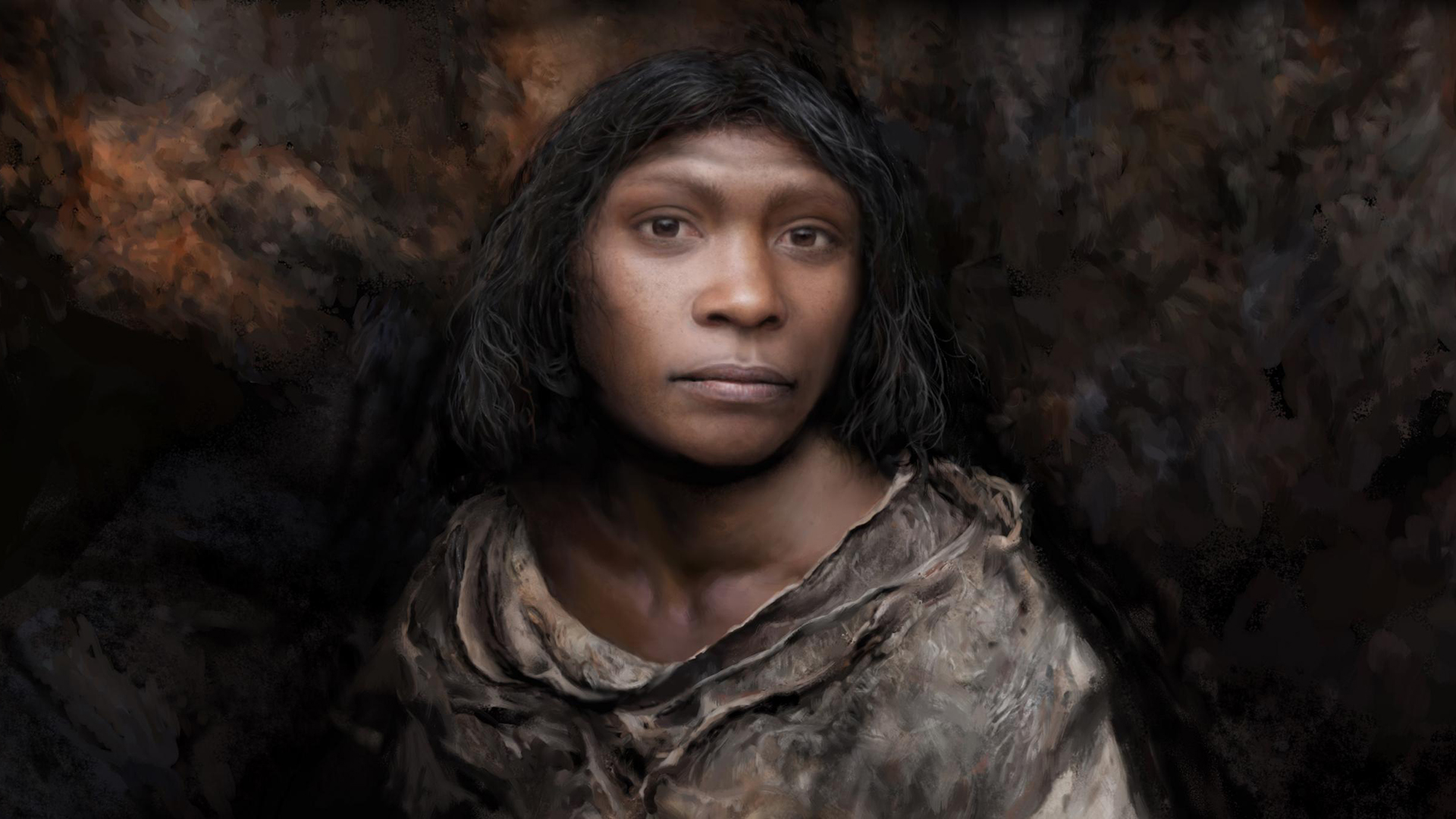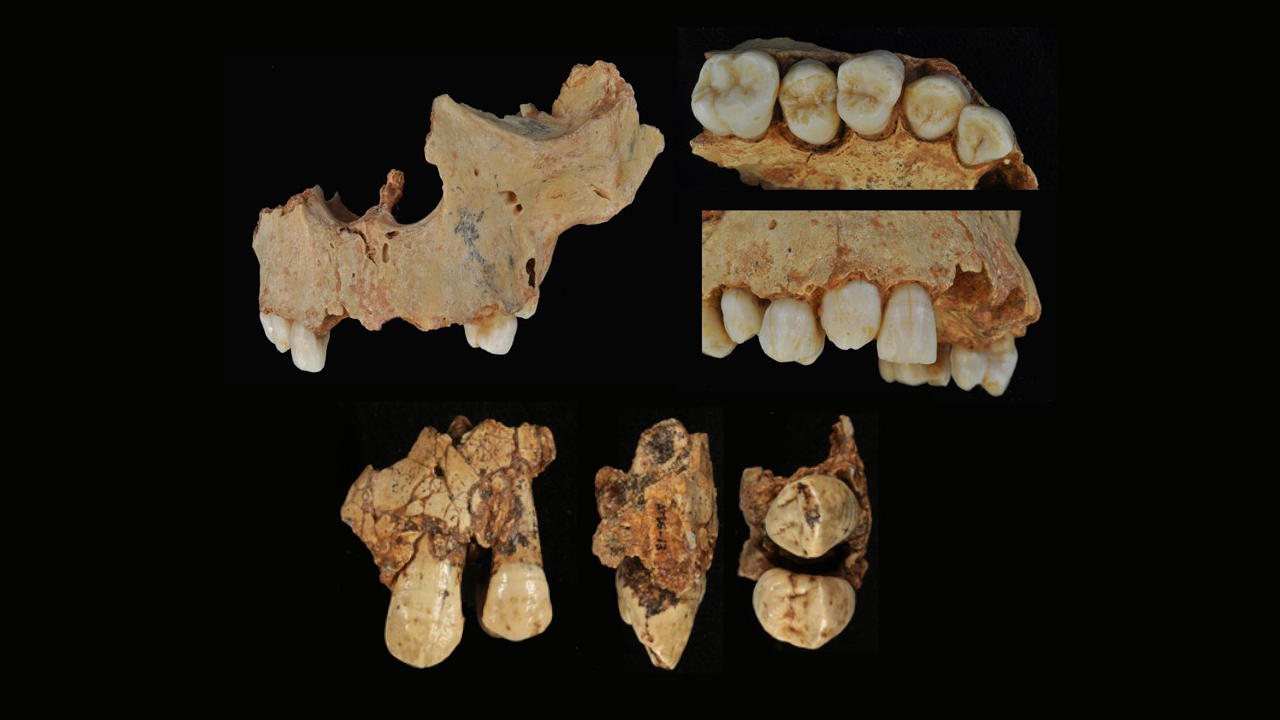Prehistoric cannibal victim found in death cave ID'ed as a young girl
The individual was formerly known as "The Boy of Gran Dolina."

About 800,000 years ago in what is now Spain, cannibals devoured an early human child who became known as "The Boy of Gran Dolina." But new analysis of these ancient remains has revealed a surprising twist: the child was a girl.
The child was a Homo antecessor, an early hominin species that lived in Europe between 1.2 million and 800,000 years ago. Discovered in 1994 in the Gran Dolina cave in northern Spain's Atapuerca Mountains, the species is known primarily from fragments of bones and teeth, which hampered researchers' efforts to determine the sex of H. antecessor individuals.
Recently, scientists tested a new technique, using a type of dental analysis that had successfully identified males and females in other early human species. They examined teeth from two Gran Dolina individuals: "H1" and "H3". H1, whose remains defined the H. antecessor species, was about 13 years old at the time of death and was long presumed to be male. The second individual, H3 — The Boy of Gran Dolina — died at the age of 11 years old and was also thought to be male.
Related: The 10 Biggest Mysteries of the First Humans
Microscopic analysis of the tooth structure for the new study revealed variations between H1's and H3's teeth that researchers identified as sexually dimorphic — differing in appearance between males and females. Based on comparisons with teeth from humans and other hominins, the scientists determined that H1 was male, but H3 was likely female.
Certain skeletal features, such as pelvis shape, size of the brow ridge and robustness of bone where muscles attach, can reveal clues about the sex of extinct human relatives. But these features only indicate the sex of adult skeletons, and about 75% of the Gran Dolina remains belong to pre-adolescent children. What's more, those cave skeletons were highly fragmented, likely because they were cannibalized.
Teeth, however, are often well-preserved in ancient archaeological sites. Other researchers had previously analyzed canine teeth to determine sex in humans (with an accuracy up to 92.3%) in populations of Neanderthals from a site in Krapina, Croatia, and in earlier hominins from Spain's Sima de los Huesos ("Pit of Bones") site in Atapuerca.
Sign up for the Live Science daily newsletter now
Get the world’s most fascinating discoveries delivered straight to your inbox.
Tooth crowns are fully formed by age 6, and since older children typically have at least some of their adult teeth, analysis of dental features "can be especially useful in paleoanthropology for estimating the sex of immature individuals," and could be applied to the children's remains from Gran Dolina, the scientists reported March 10 in the Journal of Anthropological Sciences.

The whole tooth
For the new study, the researchers looked at upper canines — the most sexually dimorphic teeth — from H1 and H3. Using high-resolution X-ray scans, they measured tissue volume and surface area of the two teeth, and compared them with existing tooth scans from modern humans, remains from the Krapina site and from Atapuerca's "Pit of Bones."
The study authors discovered that the canine from H3 had more surface enamel than H1's canine, a feature associated with female teeth. By comparison, the canine from H1 had a higher crown with more dentin, the dense, bony tissue underneath the enamel; higher dentin content is a feature of male teeth, the scientists reported. Because H1's canines were also unusually large, experts had previously guessed that the individual was male, and the new analysis confirmed that hypothesis. However, the differences between the H1 and H3 canines matched sexually dimorphic variations in other human teeth, suggesting that H3 was female.
"'The Boy of Gran Dolina' would really have been 'The Girl of Gran Dolina,'" lead study author Cecilia García-Campos, a physical anthropologist at CENIEH, said in the statement.
The girl would have been between 9 and 11 years old when she was killed and eaten, according to the study. And she wasn't the only victim; the remains from 22 H. antecessor individuals in Gran Dolina displayed signs of being cannibalized, with bones showing cuts, fractures where they had been cracked open to expose the marrow, and even tooth marks, Live Science previously reported.
One possible explanation for this ancient cannibalism is that humans were easier to catch and more nutritious than other animals, researchers wrote in 2019 in the Journal of Human Evolution. Compared with other types of prey, "a lot of food could be obtained from humans at low cost," CENIEH researcher Jesús Rodríguez, lead author of the 2019 study, said in a statement that year.
Originally published on Live Science.

Mindy Weisberger is an editor at Scholastic and a former Live Science channel editor and senior writer. She has reported on general science, covering climate change, paleontology, biology and space. Mindy studied film at Columbia University; prior to Live Science she produced, wrote and directed media for the American Museum of Natural History in New York City. Her videos about dinosaurs, astrophysics, biodiversity and evolution appear in museums and science centers worldwide, earning awards such as the CINE Golden Eagle and the Communicator Award of Excellence. Her writing has also appeared in Scientific American, The Washington Post and How It Works Magazine. Her book "Rise of the Zombie Bugs: The Surprising Science of Parasitic Mind Control" will be published in spring 2025 by Johns Hopkins University Press.










